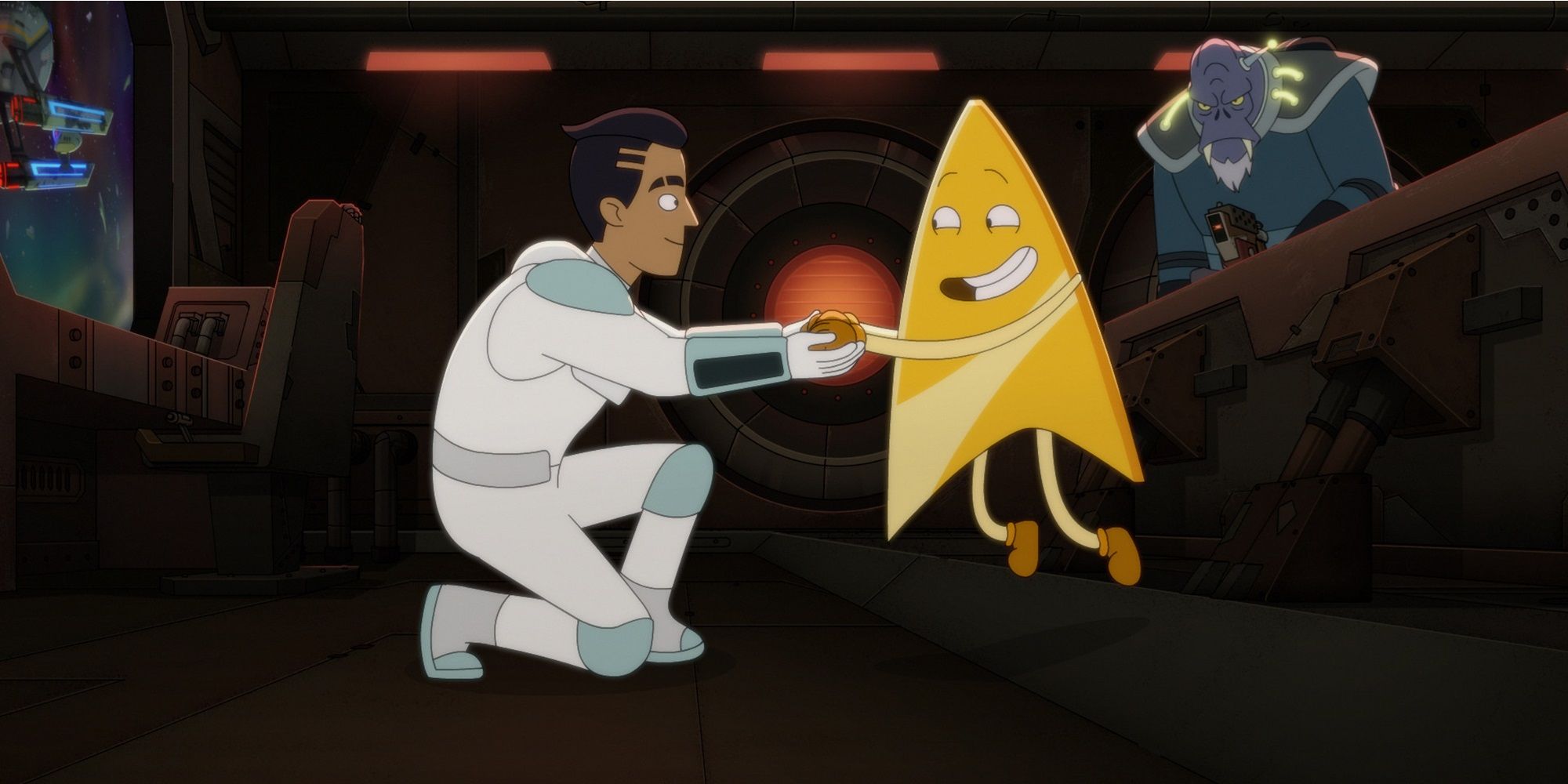Star Trek: Lower Decks has already mined the franchise’s use of evil artificial intelligence for a number of episodes. “A Few Badgeys More” brings many of those characters together for a story that wraps up the stories for Badgey, Agimus and Peanut Hamper. Silly as this episode of Lower Decks is, it’s also an episode that is rife with important Star Trek themes appearing throughout the 57-year-old franchise.To be clear, this story has little to do with the real-world debate surrounding the plagiarism engines masquerading as artificial intelligence. Star Trek predicted the modern AI debate in an episode of Star Trek: Voyager, but this and its other stories are all about the presence of humanity in the machine. Characters like Peanut Hamper, Agimus, and the various versions of Badgey aren’t really traditional AI, but rather synthetic life forms. During The Original Series era of Star Trek, AI only showed up as an allegory for automation and trying to improve upon humanity. Characters like Agimus or Vexilon, from earlier this season, represent this take on AI but Lower Decks evolves their story. Similarly, Badgey and Peanut Hamper are reflective of The Next Generation-era’s take on AI, specifically through Commander Data. They are simply “alive” despite being made of inorganic pieces. Through these truly ridiculous characters, Lower Decks is able to reinforce themes in Star Trek that were important to creator Gene Roddenberry.In Star Trek: Strange New Worlds Season 2, USS Enterprise First Officer Una Chin-Riley faced life in prison for hiding her status as a genetically augmented humanoid. The law against genetic augmentation owes itself to the trouble Khan Noonien Singh caused. The Federation is a post-scarcity utopia devoid of qualities like hate and vengeance. This begs the question: why does Starfleet even have prisons in the first place? It took the Lower Decks storytellers to figure out the answer to that question.RELATED: Lower Decks’ Grand Nagus Started with a Single Line in DS9
Star Trek: Lower Decks has already mined the franchise’s use of evil artificial intelligence for a number of episodes. “A Few Badgeys More” brings many of those characters together for a story that wraps up the stories for Badgey, Agimus and Peanut Hamper. Silly as this episode of Lower Decks is, it’s also an episode that is rife with important Star Trek themes appearing throughout the 57-year-old franchise.
To be clear, this story has little to do with the real-world debate surrounding the plagiarism engines masquerading as artificial intelligence. Star Trek predicted the modern AI debate in an episode of Star Trek: Voyager, but this and its other stories are all about the presence of humanity in the machine. Characters like Peanut Hamper, Agimus, and the various versions of Badgey aren’t really traditional AI, but rather synthetic life forms. During The Original Series era of Star Trek, AI only showed up as an allegory for automation and trying to improve upon humanity. Characters like Agimus or Vexilon, from earlier this season, represent this take on AI but Lower Decks evolves their story. Similarly, Badgey and Peanut Hamper are reflective of The Next Generation-era’s take on AI, specifically through Commander Data. They are simply “alive” despite being made of inorganic pieces. Through these truly ridiculous characters, Lower Decks is able to reinforce themes in Star Trek that were important to creator Gene Roddenberry.
In Star Trek: Strange New Worlds Season 2, USS Enterprise First Officer Una Chin-Riley faced life in prison for hiding her status as a genetically augmented humanoid. The law against genetic augmentation owes itself to the trouble Khan Noonien Singh caused. The Federation is a post-scarcity utopia devoid of qualities like hate and vengeance. This begs the question: why does Starfleet even have prisons in the first place? It took the Lower Decks storytellers to figure out the answer to that question.
#Decks #Badgey #Episode #Full #Important #Star #Trek #Themes
Note:- (Not all news on the site expresses the point of view of the site, but we transmit this news automatically and translate it through programmatic technology on the site and not from a human editor. The content is auto-generated from a syndicated feed.))



